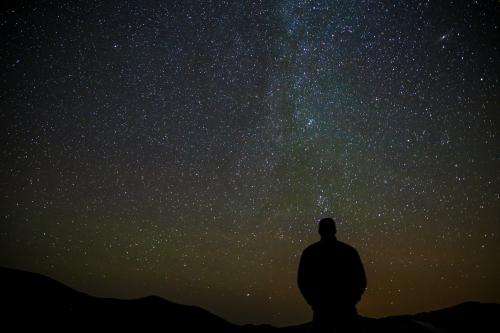Australian pioneers light the way for planetary sciences

The current understanding of meteoritics—the study of meteorite samples—has been helped along significantly over the past 200 years by the work of Australian scientists, according to a review.
WA Museum Earth and Planetary Sciences head Dr Alex Bevan has been involved in the field for 41 years and compiled the study for the Journal of the Royal Society of Western Australia.
"An impetus for planetary science came in the late 1960s with the return of samples from the Moon, and many more scientists entered the field," he says.
"From an Australian perspective during the 1950-60s period, scientists such as John Lovering, Ross Taylor, Robin Brett, Bill Compston and Ted Ringwood came to the fore.
"Later David Wark, along with Lovering, provided a better understanding of calcium-aluminium-titanium refractory inclusions [the oldest objects known to have formed in the solar system] in chondrites [stony non-metallic meteorites]."
In addition to their chemical and isotopic nature, more precise measurements of the timing of events that put the meteorites together are now available.
"The better understanding of meteorites has paralleled the development of ever-more sophisticated equipment," Dr Bevan says.
"WA came into the subject rather late, from the late 1800s on, and initially was concerned with the description of meteorites found in the state—the work of Edward Simpson and later John de Laeter and Joe McCall.
"However, when Peter Jeffery at the University of WA obtained a mass spectrometer a new breed of planetary scientist emerged such as Bill Compston and Malcolm McCulloch."
Previously, Mr Jeffery was part of the discovery of the excess xenon-129 isotope in the Richardton ordinary chondrite as the decay product of the short-lived (16 million years) radionuclide iodine-129.
This provided evidence that iodine-129 had been synthesised in a supernova less than 10 half-lives (170 million years) before the birth of the solar system and its incorporation into meteoritic materials.
"This established the concept of what is called the 'formation interval'—the time between nucleosynthesis and formation of solid material in the solar system," Dr Bevan says.
"At the Australian National University, Bill Compston was the driving force for the development of the Sensitive High-Resolution Ion Probe (SHRIMP) which allowed isotopic measurements on, and age-dating of, individual mineral grains."
Currently a Curtin University group led by Phil Bland—which Dr Bevan is a part of—called the Desert Fireball Network (DFN) is opening up a new era in planetary science in WA.
Provided by Science Network WA




















